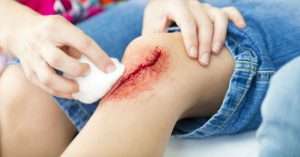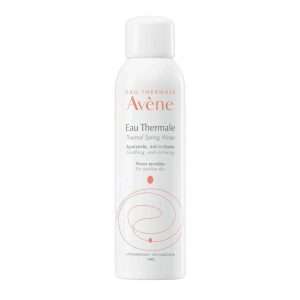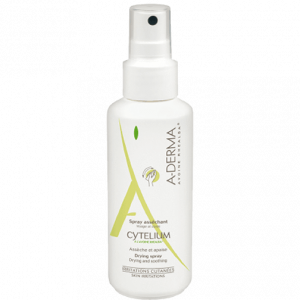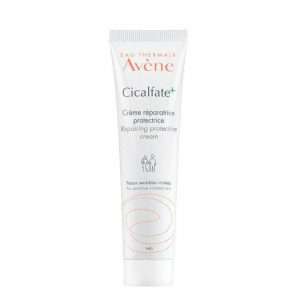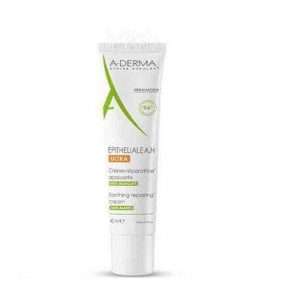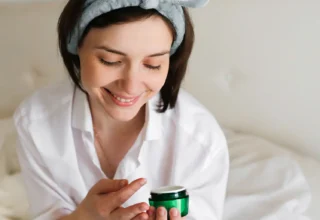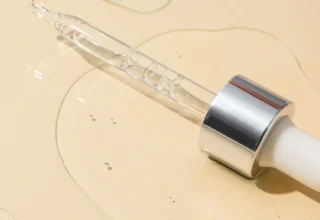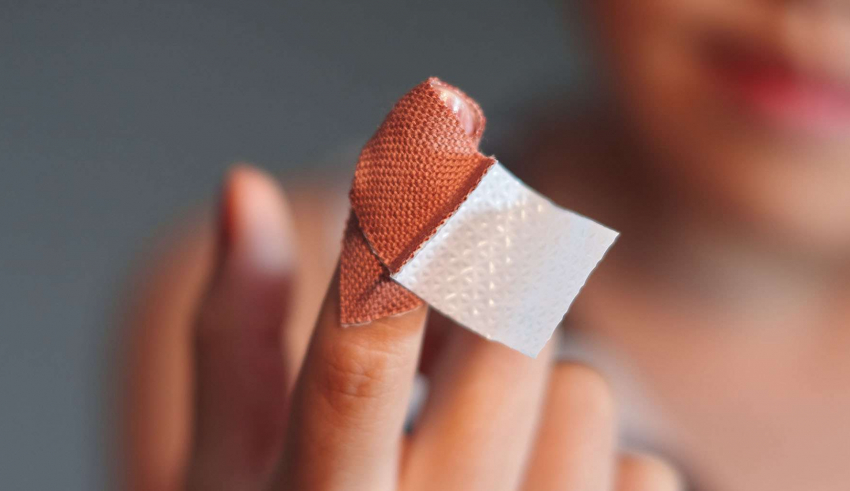
Everyone has probably had an open wound, whether it’s a small scratch from the playground or a freak accident at work. If left untreated, open wounds can be painful and lead to other health complications. The skin plays an important role in protecting organs, tissues, and other structures inside the body, so a break in the skin can potentially promote infection.
Knowledge of the types of open wounds is essential to administering treatment. That’s why we reached out to the dermatologist Dr. Maisoon Al Kayn to discuss the main types of open wounds and their treatment methods.
What is an open wound?
According to Dr. Maisoon Al Kayn, an open wound is a break in the skin or mucous membrane that leaves the underlying internal tissue exposed. Open wounds can result from a fall, blunt trauma, or surgery.
Like any other injury, open wounds can be divided into different categories. Minor cuts can be treated at home, while severe cases require emergency services. Dr. Maisoon Al Kayn advises seeking medical attention if:
- an open wound is deeper than half an inch
- bleeding does not stop with direct pressure
- bleeding lasts longer than 20 minutes
- bleeding is the result of a serious accident
We will discuss several types of open wounds, as well as their treatments in more detail below.
What are the types of open wounds?
Dr. Maisoon Al Kayn points out that there are 5 types of open wounds, including the following.
1- Abrasion
An abrasion wound happens when the skin rubs or slides against a rough surface. A skinned knee or a rash are examples of abrasions. Even though abrasions produce very little blood, it is essential to clean the wound and remove all debris to avoid infection.
2- Laceration
A laceration is a deep cut or tear in the skin. Lacerations are usually caused by incidents involving knives, machines, or other sharp tools. This type of wound can lead to significant bleeding.
3- Avulsion
An avulsion is the forceful removal of skin and underlying tissue. It can result from severe incidents, such as explosions, animal attacks, or traffic accidents.
4- Puncture
A puncture wound involves a tiny hole in the soft tissue. Splinters and needles can cause sharp puncture wounds affecting only the outer layers of tissue. However, knife or bullet wounds can harm deep muscles and internal organs, resulting in significant bleeding.
5- Incision
An incision is a clean and straight cut in the skin. Accidents involving knives, razor blades, broken glass, and other sharp objects can cause incisions that result in rapid and heavy bleeding. Deep incisions can damage muscles or nerves and will most probably require stitches.
What are the stages of wound healing?
Dr. Maisoon Al Kayn indicates that there are three phases of healing: the inflammatory phase, the proliferative phase and the remodeling (maturation) phase.
- Inflammatory phase: This phase begins at the time of injury and lasts up to four days.
- Proliferative phase: This phase begins about three days following the injury and overlaps with the inflammatory phase.
- Remodeling (maturation) phase: This phase may continue for six months to a year following the injury.
What are the first aid measures for open wounds?
Follow the steps below for minor cuts and scrapes:
1- Wash your hands. This will help prevent infection.
2- Stop the bleeding. Small cuts and scrapes usually stop bleeding on their own. If necessary, apply gentle pressure with a clean bandage or cloth and elevate the wound until the bleeding stops.
3- Clean the wound. Rinse the wound with water. Keeping the wound under running water reduces the risk of infection. Wash the area around the wound with soap and remove any dirt or debris with tweezers cleaned with alcohol. Seek medical attention if you are unable to remove all debris.
We recommend applying Eau Thermale Avène Spring Water Spray to the wound. It will cool and soothe the skin while reducing redness and irritation. In addition, it is packaged in a sterile environment for guaranteed purity. Its gentle, pure formula provides your wound with long-lasting protection, including old wounds. So, don’t hesitate to spray it on your skin to get the most out of its moisturizing and soothing ingredients.
4- Apply a wound cream. Dr. Maisoon Al Kayn notes that different wound cream compositions can be used depending on the risk of infection and the depth of the wound. It may contain an antiseptic such as chlorhexidine, an antibiotic, silver sulfadiazine, copper and zinc, hyaluronic acid, honey, etc.
In the case of mild cases, you could use the following products.
For oozing wounds:
If your wound is oozing, we recommend drying it with the following spray from A-Derma. It dries, decongests and calms the fragile epidermis. Apply the spray on the zones to be treated, using sterile compresses, 2 to 3 times per day.
A-Derma Cytelium Drying Spray
Once your wound is dry, you can follow up with the following creams to improve and speed up the healing of the skin. These powerful repair creams are specially formulated for fragile and/or sensitized skin to heal the skin faster and prevent scarring.
Eau Thermale Avène Cicalfate+ Restorative Protective Cream
A-Derma Epitheliale A.H Ultra Soothing Repairing Cream
For non-oozing wounds:
The wound is already dry, thus you can directly apply the two creams mentioned above: Eau Thermale Avène Cicalfate+ Restorative Protective Cream and A-Derma Epitheliale A.H Ultra Soothing Repairing Cream.
In case of deep wounds and cuts, it is recommended to consult a dermatologist.
5- Cover the wound. Apply a bandage, rolled gauze, or gauze held in place with tape. Covering the wound will keep it clean. If the wound is only a minor scrape or scratch, leave it uncovered.
6- Change the dressing. Do this at least once a day or as soon as the dressing becomes wet or dirty.
7- Get a tetanus shot. Get a tetanus shot if you have not been vaccinated in the last five years and the wound is deep or dirty.
Are there any complications associated with open wounds?
Here are some notable conditions that can arise from an open wound according to Dr. Maisoon Al Kayn.
*Short-term complications
- Irritant or allergic contact dermatitis to topical antibiotics or bandages
- Bleeding
- Poor wound healing
- Pain
- Infection
- Pruritus
*Long-term complications
- Atrophic scars (thin, depressed, spread out)
- Hypertrophic scars (red, thickened)
- Keloids
You should always consult your dermatologist if you notice any signs of complications.
What are the signs of infection?
If a large wound is left untreated or poorly treated, it can lead to infection. Dr. Maisoon Al Kayn lists the following symptoms:
- Redness around the wound
- Pus draining or yellowish crust on top of the wound
- Pain that gets worse after a few days
- Swelling that gets worse and spreads after a few days
- The heat from the wound
- Fever
- A wound that isn’t healing
Last Updated on March 19, 2024
